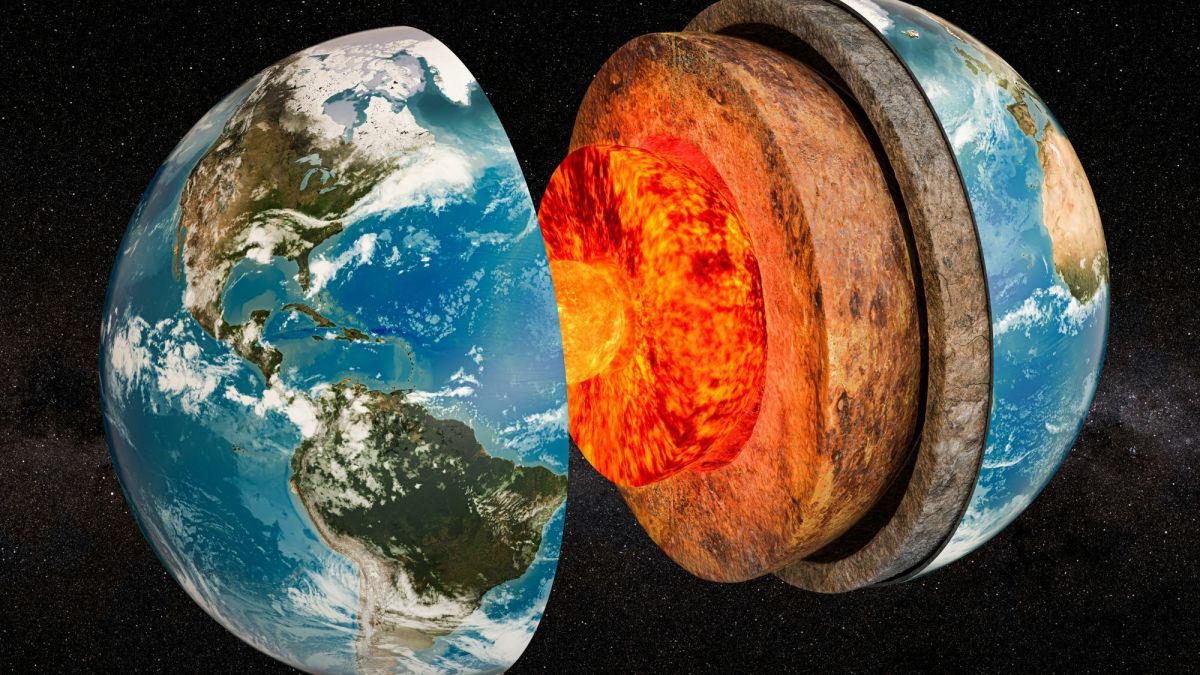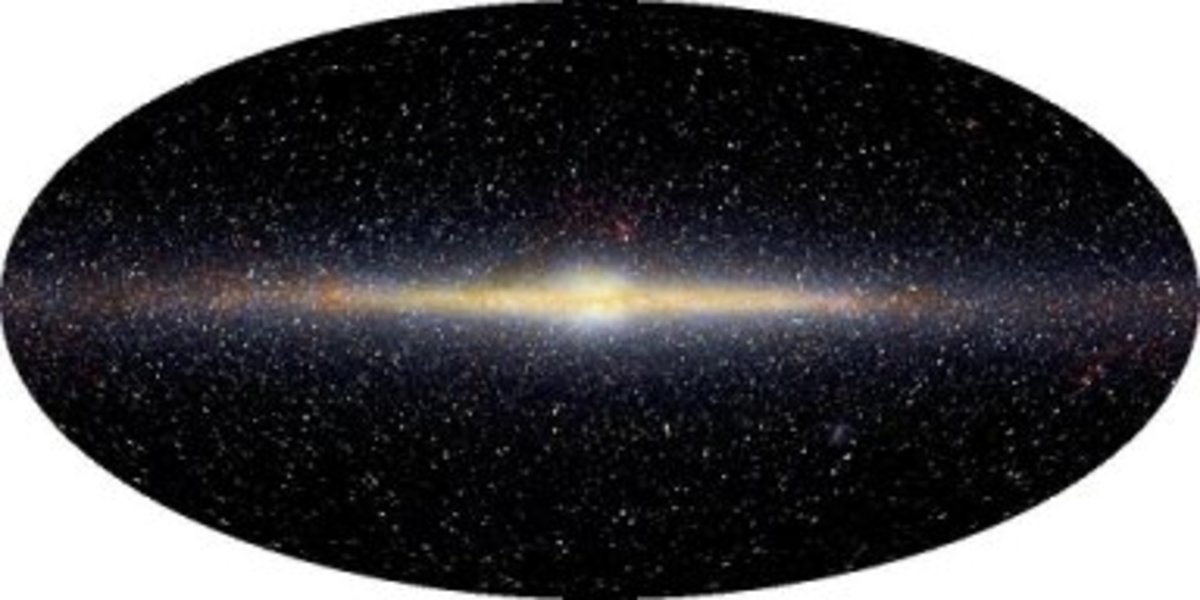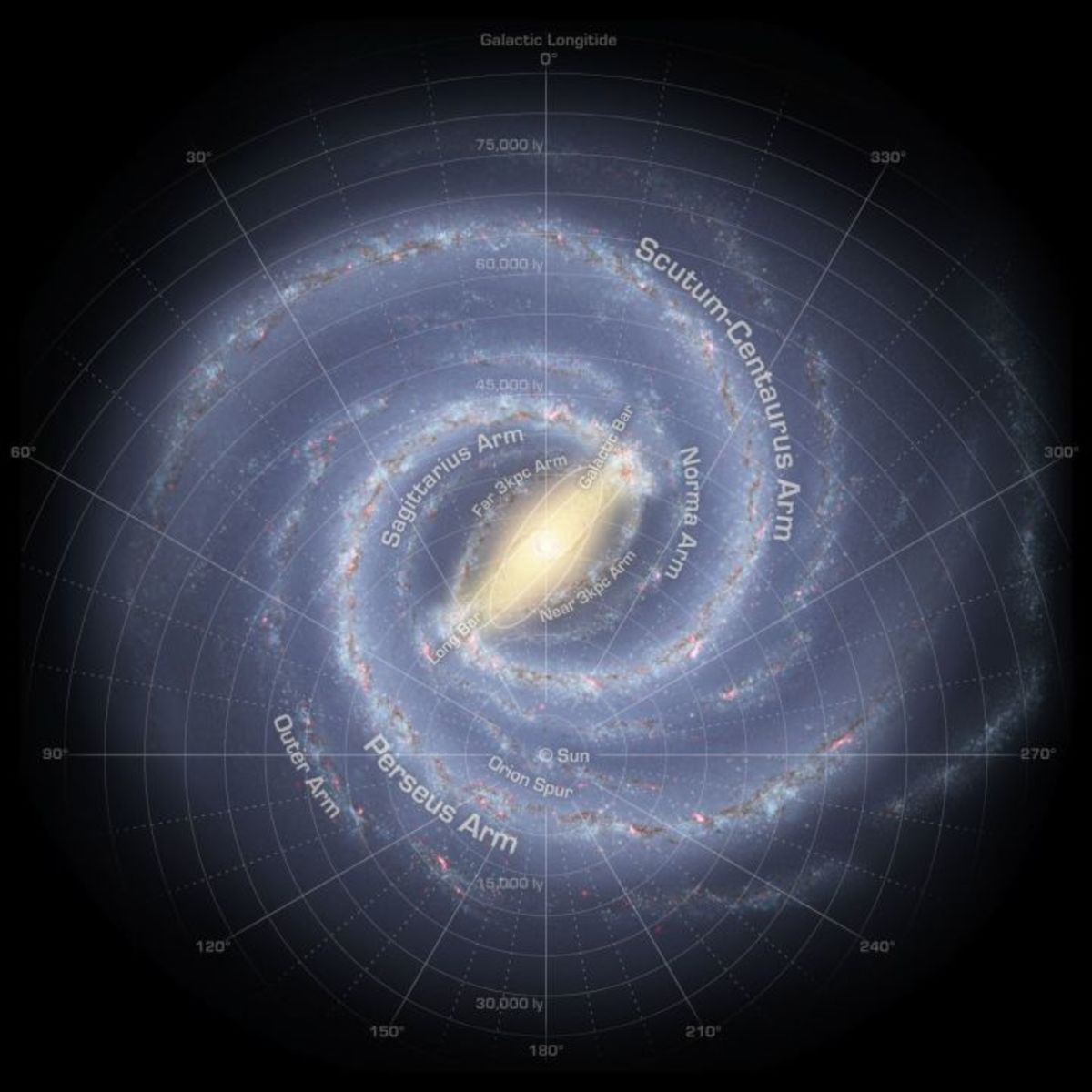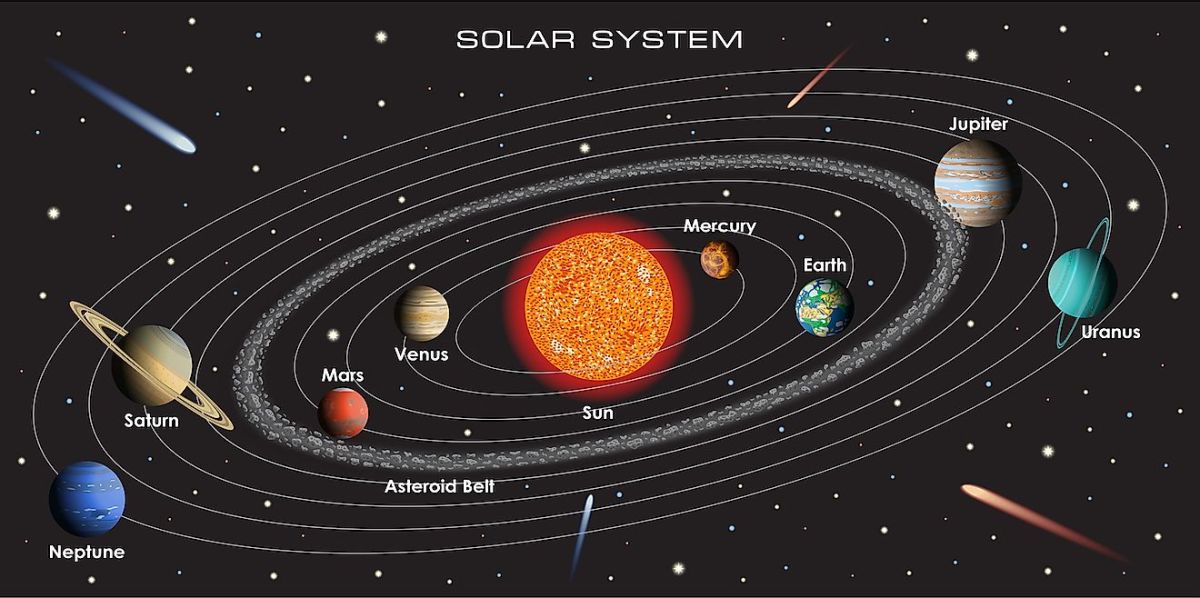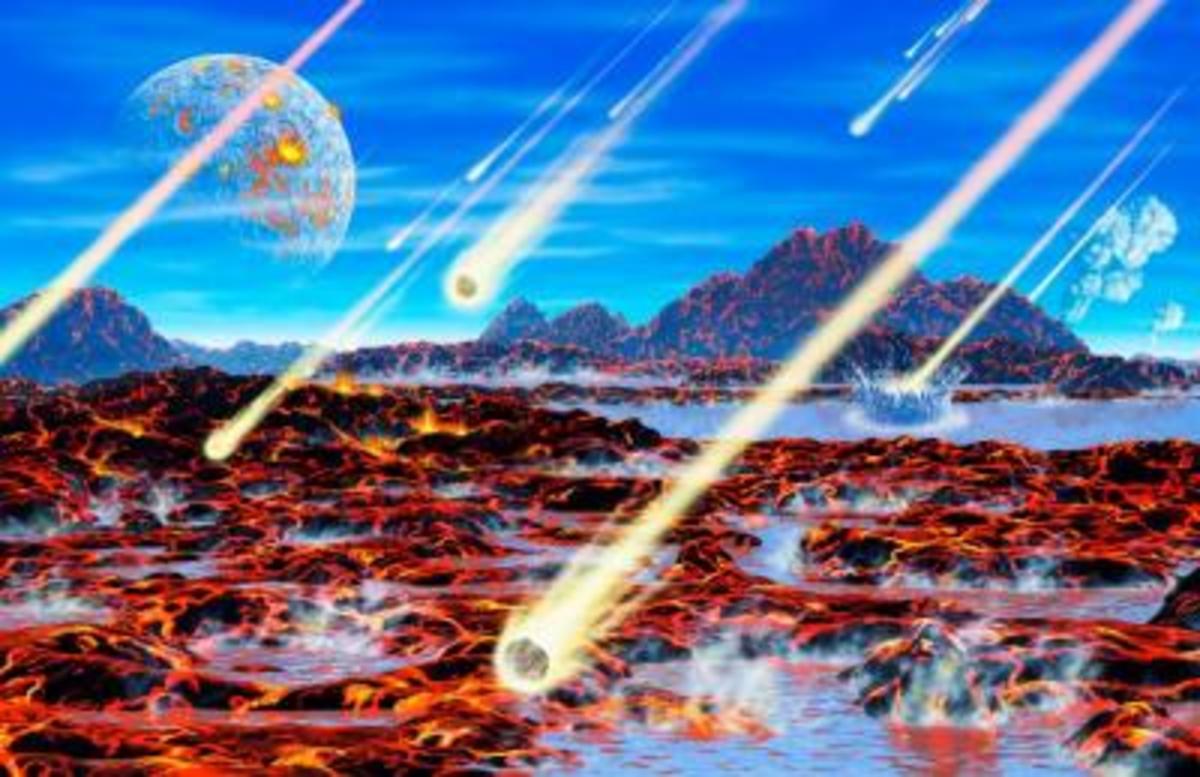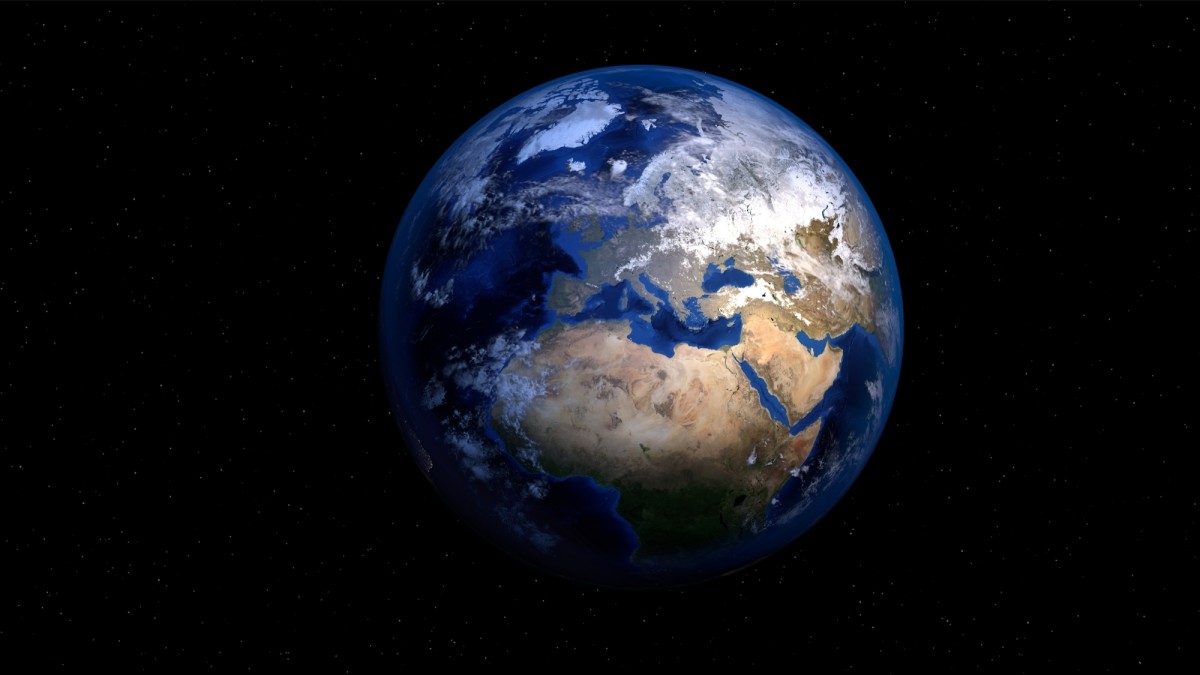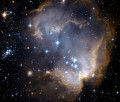The Earth and Space Dust
zodiacal light and sun pillars have been an inspiration to many.
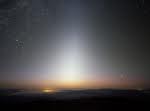
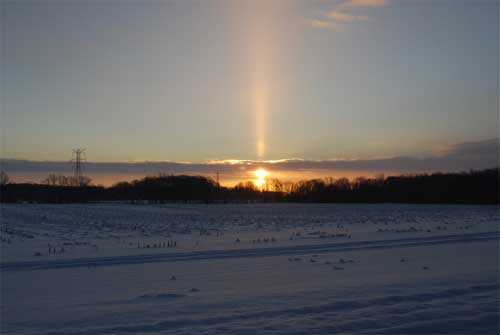
Dust around the sun can create interesting effects as well as adding material to earth.
An old song goes "...And they sprinkled stardust in your hair..." has more significance than there seems just on the surface. In fact we all have stardust sprinkled in our hair on a daily basis. Cosmologists tell us that all the elements that we are familiar with and that are contained in our bodies are made in the interior of stars that exploded and seeded the galaxy long ago. The Solar system condensed from primordial hydrogen and some of this star forged material, transmuted from hydrogen into the heavier elements by fusion. After the solar system evolved to its present state, a lot of the dust and small bits were left over to create the zodiacal light, meteoroids, asteroids and comets.
The zodiacal light which is visible more at latitudes close to the equator than toward the poles is light reflected by a diffuse disk of dust that orbits the sun roughly on the plane of the ecliptic. The Earth and the planets orbit through the dust that reflects the sunlight and some of it rains gently down settling through the atmosphere and onto everything on the Earth's surface. Most of the particles are so small and fluffy that they do not burn up in the atmosphere. Instead, they settle gently like snow. Many are so small that they are only microns in size. Some are bigger. Sand grain sized ones do burn up in the high atmosphere but never get close to the surface. The burnt remnants having combined with oxygen and split up, settle as dust like the smaller bits.
Among the dust stirred up by wind and blown clear around the world in the jet streams, are countless dust particles that came from interplanetary space. These settle everywhere including in our hair; so we all have stardust in our hair. Astronauts have filmed the sand grain sized ones hitting the upper atmosphere. The film looks like a carpet bombing as they temporarily light up the upper atmosphere. Some times of the year are busier for this display than others. These times are the sixteen annual meteor showers that originate mostly from the Earth crossing comet orbits.
How much of the Earth's surface is made up of space dust? All of it is ultimately. Some of it has been around since the beginning of Earth’s time and some landed just moments ago. The slowly settling space dust is slowly adding to the mass of the Earth and thus slowly increasing its mass and size. The earth is still growing as a result. It grows by some estimates, at the rate of 40,000 tons a year.
Since we know of this, we have flown low earth orbit satellites to collect some of this primordial dust in order to better understand the origins of the solar system. The missions to collect space dust from just above the atmosphere and from the dust spewed out from comets have been successful and have shed light on the origins of the solar system and have allowed us to refine the age of the solar system. Currently, that age has been refined to 4.57 billion years.
The next time you are in the tropics, go outside just before sunrise or just after sunset. You'll see a pyramid shaped pattern of light on the horizon where the sun was moments before in the west or just moments before it rises in the east, which is the zodiacal light. This is the light scattered by the dust in orbit around the sun and through which the Earth moves. It has been the inspiration behind the form of the pyramid. Alternately, on can see what is called a sun pillar; the inspiration behind the obelisks we see around the world since Egyptian times. Some of that has settled right into your hair and collected into cobwebs and dust bunnies.

